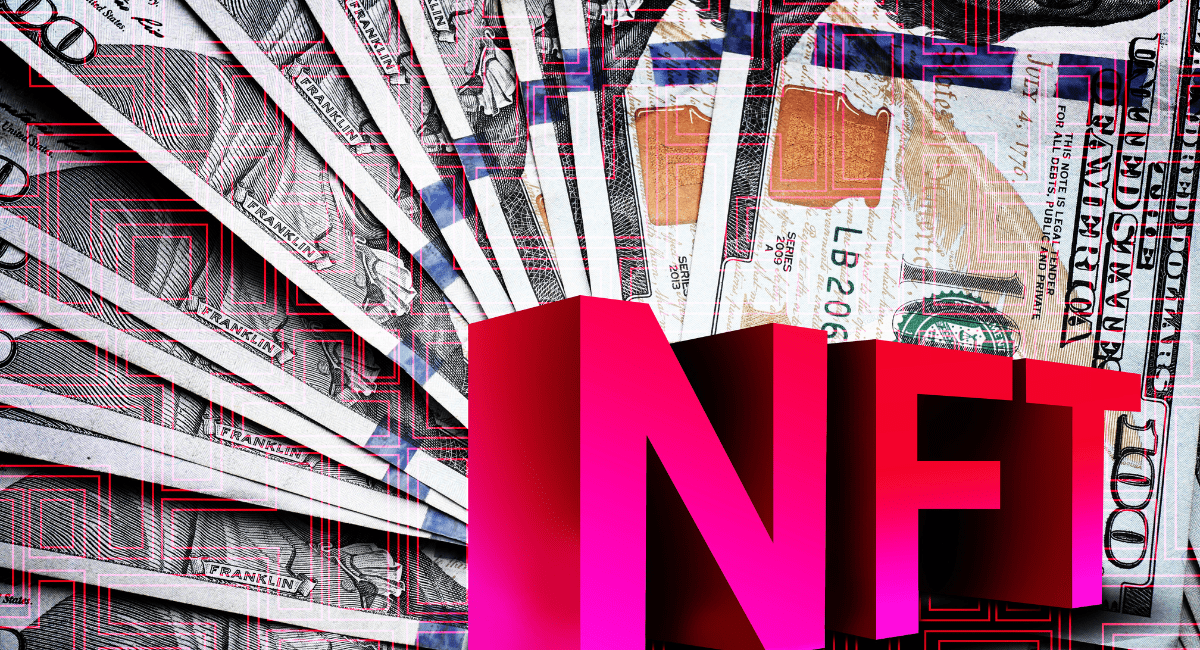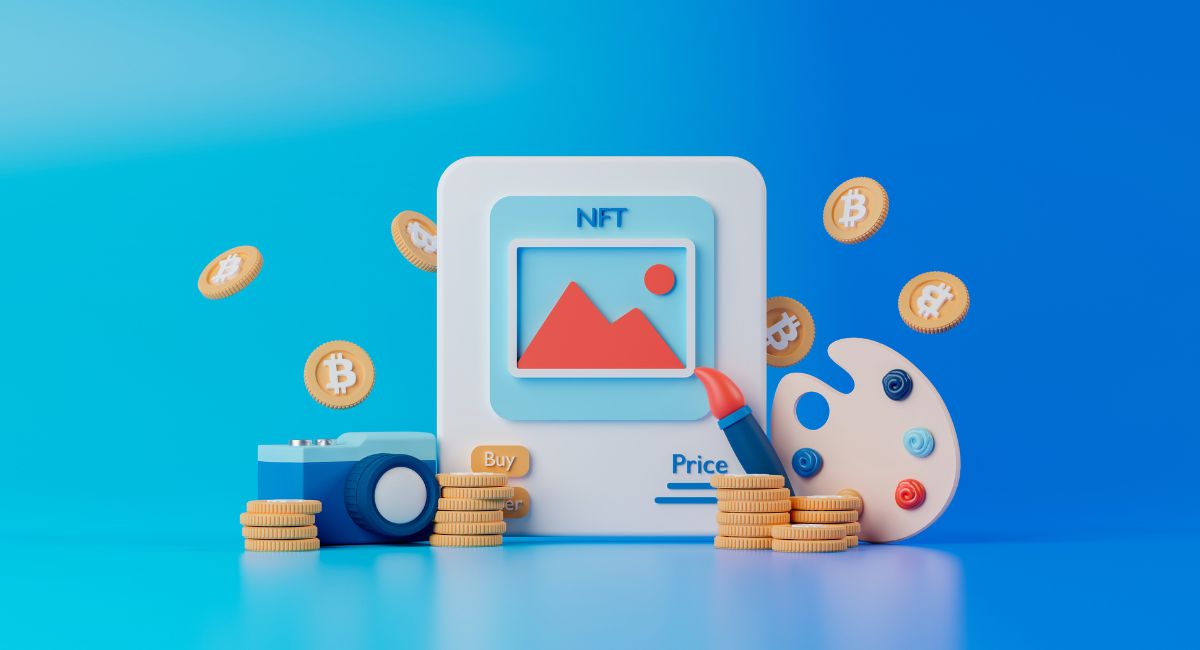What Is Time Stamp Digital Certificate In The NFT World And Its Top 10 Importance

The NFT (Non-Fungible Token) world has emerged as a dynamic and transformative space within the broader blockchain ecosystem, fundamentally altering how we perceive, buy, and sell digital assets. NFTs represent unique, indivisible tokens on a blockchain, often built on standards like Ethereum’s ERC-721, and they have rapidly become synonymous with ownership and authenticity in the digital realm.
At the heart of the NFT world is the concept of digital ownership. NFTs allow creators to tokenize their digital content, including art, music, videos, and virtual real estate, turning intangible creations into unique, verifiable assets. This innovation has sparked a renaissance in digital art, empowering artists to monetize their work directly, establish ownership rights, and engage with a global audience without traditional intermediaries.
The decentralized and transparent nature of blockchain technology ensures the authenticity and provenance of NFTs, addressing longstanding challenges in the art world related to forgery and ownership disputes. Blockchain’s immutability ensures that the ownership history of an NFT is irrefutable, providing a secure and reliable record of its journey from creator to collector.
The NFT world has also witnessed a surge in the popularity of virtual assets and experiences. Virtual real estate, in the form of NFT-based digital land, has created virtual environments where users can build, trade, and socialize. This has given rise to the concept of the metaverse, a collective virtual shared space that blurs the lines between physical and digital realities
Celebrities, musicians, and athletes have embraced NFTs as a means to connect with fans and monetize their digital presence. NFT-based collectibles, often referred to as “crypto-collectibles,” have become a cultural phenomenon, with unique digital items ranging from trading cards to virtual sneakers.
However, the NFT world is not without its challenges. Environmental concerns related to the energy consumption of certain blockchain networks, particularly those using proof-of-work consensus mechanisms, have sparked debates about sustainability. Additionally, questions about copyright, intellectual property, and the potential for market bubbles are subjects of ongoing discussion within the NFT community.
As the NFT world continues to evolve, it represents a paradigm shift in how we value and exchange digital assets. The intersection of technology, art, and ownership has given rise to a decentralized creative economy where artists, collectors, and enthusiasts can participate in a borderless, digital marketplace. While the NFT world navigates challenges and explores new frontiers, its impact on the broader cultural and economic landscape is undeniable, shaping the future of ownership in the digital age.
Also, read- Top 10 Surprising Role Of NFT Development In Connecting Real And Virtual Worlds
Importance of NFT in various sectors

The importance of NFTs (Non-Fungible Tokens) extends across various sectors, revolutionizing how we perceive and interact with digital assets. Here are key aspects that highlight the significance of NFTs:
- Digital Ownership and Authenticity:
- NFTs provide a secure and verifiable way to establish ownership and authenticity of digital assets. Artists, musicians, and content creators can tokenize their work, ensuring that each piece is unique and can be traced back to its origin on the blockchain. This addresses longstanding issues of digital forgery and piracy.
- Monetizing Digital Content:
- NFTs enable creators to monetize their digital content directly, without relying on traditional intermediaries. This empowers artists to receive fair compensation for their work, fostering a more direct and transparent relationship with their audience.
- Decentralization and Immutability:
- Built on blockchain technology, NFTs benefit from decentralization and immutability. The decentralized nature ensures that no single entity controls the entire system, while immutability ensures that once recorded on the blockchain, ownership history and details cannot be altered.
- Innovation in Digital Art:
- NFTs have sparked a renaissance in digital art, creating new possibilities for artists to experiment with and showcase their work. Digital artists can reach a global audience, and collectors can own rare, limited-edition digital pieces, challenging traditional notions of art ownership and value.
- Virtual Real Estate and Metaverse Development:
- NFTs extend beyond traditional art to include virtual real estate and assets within the metaverse. Users can buy, sell, and trade virtual land, buildings, and items, contributing to the development of immersive digital environments where people can socialize, work, and play.
- Fan Engagement for Celebrities and Brands:
- Celebrities, musicians, and brands leverage NFTs to engage with their fan base. Through NFT-based collectibles and experiences, creators can connect directly with their audience, offering exclusive content, access, and unique digital items.
- Provenance and Intellectual Property:
- NFTs provide an indisputable record of provenance for digital assets. This has implications for intellectual property rights, ensuring that creators receive credit and compensation for their work. NFTs can include smart contracts that automate royalty payments to creators whenever the asset is resold.
- Cultural Impact and Community Building:
- The NFT movement has created a cultural shift, sparking conversations about the value of digital ownership and the intersection of technology and art. NFT communities thrive on decentralized platforms, fostering a sense of belonging and shared interest among collectors and creators.
- Potential for Tokenization of Real-World Assets:
- NFTs pave the way for the tokenization of real-world assets such as real estate, luxury goods, and intellectual property. This could democratize access to investments and reshape traditional financial systems.
- Challenges and Opportunities for Sustainability:
- While the environmental impact of certain blockchain networks has raised concerns, it also presents an opportunity for the NFT space to explore more sustainable solutions, such as blockchain networks with energy-efficient consensus mechanisms.
The integration of blockchain technology with telecom services positions @telcoin for substantial growth. Its user-centric and compliance-focused approach makes it a compelling player in the #crypto market. With ongoing developments and potential expansion, #Telcoin is a project… pic.twitter.com/haPHbmTggM
— itsTheJuggler (@telcoin_nft) January 23, 2024
Timestamp digital certificate in the NFT world

A time-stamp digital certificate in the NFT (Non-Fungible Token) world plays a crucial role in establishing the authenticity, ownership, and chronological order of digital assets. Here’s how it works:
- Authentication and Provenance:
- A time-stamp digital certificate is often used to record the exact time when a digital asset, such as an image, video, or piece of music, is created or minted as an NFT. This timestamp serves as a proof of authenticity and helps establish the asset’s provenance on the blockchain.
- Preventing Double-Spending:
- The timestamp ensures that the NFT is a unique and indivisible token. By recording the specific time of creation on the blockchain, it prevents double-spending or the creation of identical tokens, reinforcing the scarcity and uniqueness of the digital asset.
- Chronological Order and Ownership History:
- The time-stamp digital certificate is part of the metadata associated with an NFT. It forms an integral part of the blockchain’s chronological order, creating an immutable record of the asset’s ownership history. This timestamped record can be accessed publicly, providing transparency about the NFT’s journey from creation to its current owner.
- Smart Contracts and Royalties:
- NFTs often utilize smart contracts that can include details about the time of creation. This is particularly relevant when incorporating resale royalties into the smart contract code. The timestamp ensures that the smart contract accurately calculates and distributes royalties to the original creator whenever the NFT is resold.
- Legal and Intellectual Property Considerations:
- The time-stamp digital certificate serves as a critical piece of evidence in legal and intellectual property contexts. In the event of disputes over ownership or copyright, the timestamp provides a verifiable record of when the digital asset was first created and tokenized as an NFT.
- Enhanced Trust and Transparency:
- For collectors, buyers, and the broader community, the presence of a time-stamp digital certificate enhances trust and transparency. It assures stakeholders that the information related to the NFT world creation is accurate, reducing the risk of fraudulent activities or misrepresentation.
- Standardization and Interoperability:
- Establishing standards for time-stamping NFT world contributes to interoperability across different platforms and marketplaces. A standardized approach to time-stamping ensures consistency in recording creation times, fostering a more unified and reliable ecosystem.
- Cross-Platform Verification:
- Time-stamped data associated with the NFT world allows for cross-platform verification. Whether the NFT is viewed on the original marketplace, in a digital wallet, or on a third-party platform, the timestamp remains a consistent and verifiable piece of information.
- Compliance with Regulations:
- In certain industries, such as art or digital media, compliance with regulations and intellectual property laws is essential. The time-stamp digital certificate helps creators and platforms adhere to legal requirements by maintaining accurate records of the NFT’s creation time.
- Technological Advances and Evolution:
- The use of time-stamp digital certificates is expected to evolve with technological advances. As blockchain technology progresses, new methods for enhancing the accuracy and security of timestamps may emerge, further refining the role of time stamps in the NFT world.
Top 10 importance of time stamp digital certificate in the NFT world

The time-stamp digital certificate in the NFT (Non-Fungible Token) world holds several crucial implications for the integrity, transparency, and functionality of the NFT ecosystem. Here are 10 important aspects of the time-stamp digital certificate:
- Authenticity and Provenance:
- The time stamp serves as a cryptographic proof of the exact moment an NFT is created or minted. This timestamp is critical for establishing the authenticity and provenance of digital assets, ensuring that the NFT is a unique and original creation.
- Preventing Double-Spending:
- Time-stamping prevents double-spending by recording the precise time of NFT creation on the blockchain. This ensures that each NFT is distinct, reducing the risk of unauthorized duplication or counterfeit tokens.
- Ownership History and Transparency:
- The time-stamp digital certificate forms part of the NFT’s metadata, contributing to the ownership history recorded on the blockchain. This transparency allows anyone to trace the NFT’s journey from creation to its current owner, fostering trust in the authenticity of the digital asset.
- Smart Contract Functionality:
- Smart contracts associated with NFTs often incorporate time-stamped data. This functionality is crucial for implementing features like royalty payments to creators upon resale. The accurate recording of creation times ensures fair compensation for artists and creators.
- Legal and Intellectual Property Documentation:
- In legal and intellectual property contexts, the time stamp serves as a verifiable record of when the digital asset was created. This documentation is valuable in proving ownership and copyright in case of legal disputes or infringement claims.
- Royalties and Revenue Sharing:
- NFTs often involve revenue-sharing models through smart contracts. The time-stamp digital certificate ensures that the calculation and distribution of royalties are accurate, providing creators with a fair share of the revenue generated from secondary market transactions.
- Standardization for Interoperability:
- Standardizing time-stamping practices enhances interoperability across different NFT marketplaces and platforms. A consistent approach to recording creation times promotes compatibility and seamless interaction within the broader NFT ecosystem.
- Cross-Verification Across Platforms:
- Time-stamped data allows for cross-platform verification of NFT details. Whether viewed on the original marketplace, in digital wallets, or on third-party platforms, the timestamp ensures that information related to the NFT’s creation remains consistent and verifiable.
- Trust and Confidence in the NFT Market:
- The inclusion of time-stamp digital certificates builds trust and confidence in the NFT market. Collectors and buyers can rely on the accuracy of creation times, reducing the risk of fraudulent activities and misrepresentation of digital assets.
- Evolution with Technological Advances:
- As blockchain technology evolves, so does the capability of time-stamp digital certificates. Innovations in timestamping methods may emerge, contributing to enhanced accuracy, security, and reliability in recording the creation times of NFTs.
Conclusion
In conclusion, the time-stamp digital certificate stands as a cornerstone in the realm of Non-Fungible Tokens (NFTs), offering a multitude of benefits that contribute to the integrity, transparency, and functionality of the NFT ecosystem. By providing cryptographic proof of the precise moment an NFT is created, the time stamp plays a pivotal role in establishing the authenticity, uniqueness, and provenance of digital assets.
The prevention of double-spending, transparency in ownership history, and the incorporation of time-stamped data in smart contracts all contribute to a more secure and fair NFT marketplace. Artists and creators benefit from accurate time stamps as they facilitate the implementation of revenue-sharing models and ensure the just distribution of royalties upon resale.
Moreover, the time-stamp digital certificate serves as a valuable tool in legal and intellectual property contexts, offering verifiable documentation of creation times to address disputes and claims. Its standardized application enhances interoperability across diverse NFT platforms, fostering a cohesive and seamless experience for users within the broader ecosystem.




























































